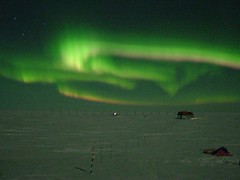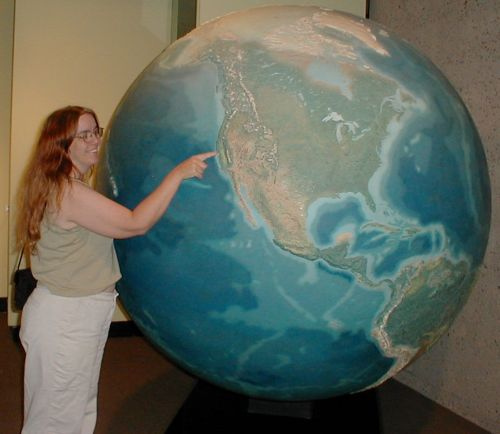The aurorae have been mysterious to humans throughout history, but we're learning more -- and the learning doesn't ruin the magic, for me. It reminds me of Richard Feynman's famous footnote within the Feynman Lectures on Physics. It reads like a poem:
Poets say science takes away from the beauty of the stars — mere globs of gas atoms. Nothing is 'mere'. I too can see the stars on a desert night, and feel them. But do I see less or more? The vastness of the heavens stretches my imagination— stuck on this carousel my little eye can catch one-million-year-old light. A vast pattern— of which I am a part... What is the pattern or the meaning or the why? It does not do harm to the mystery to know a little more about it. For far more marvelous is the truth than any artists of the past imagined it. Why do the poets of the present not speak of it? What men are poets who can speak of Jupiter if he were a man, but if he is an immense spinning sphere of methane and ammonia must be silent.
From a NASA press release:
NASA Satellites Discover What Powers Northern Lights
GREENBELT, Md. — Researchers using a fleet of five NASA satellites have discovered that explosions of magnetic energy a third of the way to the moon power substorms that cause sudden brightenings and rapid movements of the aurora borealis, called the Northern Lights.
The culprit turns out to be magnetic reconnection, a common process that occurs throughout the universe when stressed magnetic field lines suddenly snap to a new shape, like a rubber band that's been stretched too far.
"We discovered what makes the Northern Lights dance," said Dr. Vassilis Angelopoulos of the University of California, Los Angeles. Angelopoulos is the principal investigator for the Time History of Events and Macroscale Interactions during Substorms mission, or THEMIS.
Substorms produce dynamic changes in the auroral displays seen near Earth's northern and southern magnetic poles, causing a burst of light and movement in the Northern and Southern Lights.
Substorms often accompany intense space storms that can disrupt radio communications and global positioning system signals and cause power outages. Solving the mystery of where, when, and how substorms occur will allow scientists to construct more realistic substorm models and better predict a magnetic storm's intensity and effects.
"As they capture and store energy from the solar wind, the Earth's magnetic field lines stretch far out into space. Magnetic reconnection releases the energy stored within these stretched magnetic field lines, flinging charged particles back toward the Earth's atmosphere," said David Sibeck, THEMIS project scientist at NASA's Goddard Space Flight Center in Greenbelt, Md. "They create halos of shimmering aurora circling the northern and southern poles."
Scientists directly observe the beginning of substorms using five THEMIS satellites and a network of 20 ground observatories located throughout Canada and Alaska. Launched in February 2007, the five identical satellites line up once every four days along the equator and take observations synchronized with the ground observatories. Each ground station uses a magnetometer and a camera pointed upward to determine where and when an auroral substorm will begin. Instruments measure the auroral light from particles flowing along Earth's magnetic field and the electrical currents these particles generate.
During each alignment, the satellites capture data that allow scientists to precisely pinpoint where, when, and how substorms measured on the ground develop in space. On Feb. 26, 2008, during one such THEMIS lineup, the satellites observed an isolated substorm begin in space, while the ground-based observatories recorded the intense auroral brightening and space currents over North America.
These observations confirm for the first time that magnetic reconnection triggers the onset of substorms. The discovery supports the reconnection model of substorms, which asserts a substorm starting to occur follows a particular pattern. This pattern consists of a period of reconnection, followed by rapid auroral brightening and rapid expansion of the aurora toward the poles. This culminates in a redistribution of the electrical currents flowing in space around Earth.
THEMIS is the fifth medium-class mission under NASA's Explorer Program. The program, managed by the Explorers Program Office at Goddard provides frequent flight opportunities for world-class space investigations in heliophysics and astrophysics. The University of California, Berkeley's Space Sciences Laboratory in Berkeley, Calif., managed the project development and is currently operating the THEMIS mission. ATK Space (formerly Swales Aerospace) of Beltsville, Md., built the THEMIS satellites.
The THEMIS team's findings will appear online July 24 in Science Express and Aug. 14 in the journal science. For more information about the THEMIS mission, visit:
http://www.nasa.gov/themis
Gizmodo has a great animation of the bursts of energy related to the aurora.
NASA has a wealth of other videos.


No comments:
Post a Comment